CB2105 - CROP UPDATE 5 - 28th June 2021
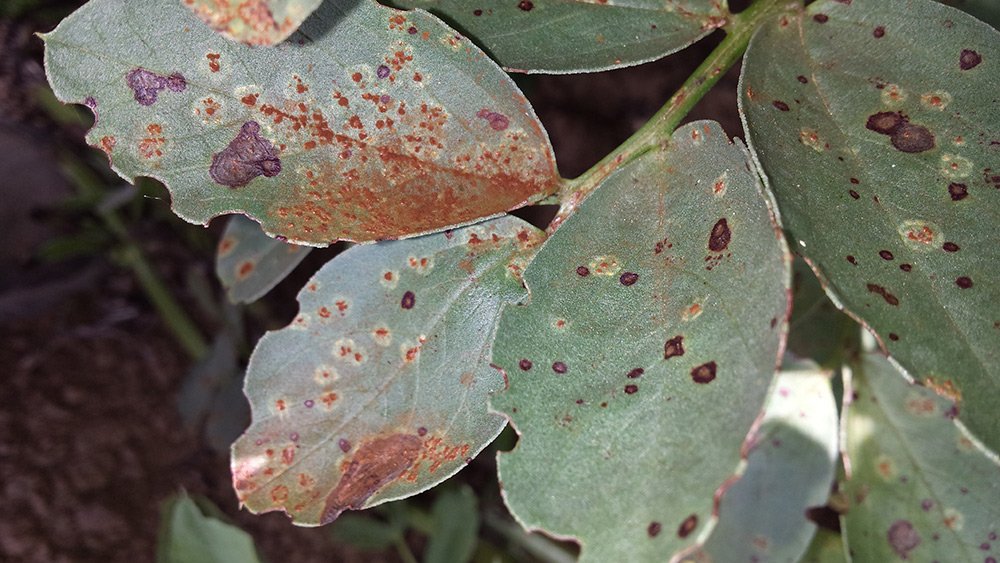
Elatus Era for disease control

Field bean growers can now use the new Syngenta fungicide, Elatus Era, for the control of rust and chocolate spot infections for the rest of the 2021 season.
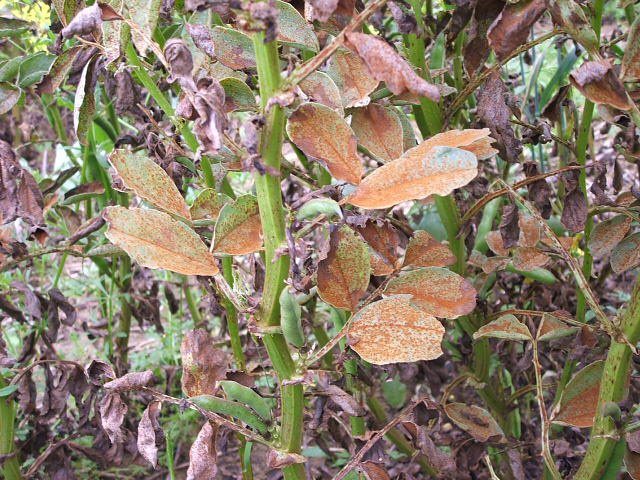
Rust |
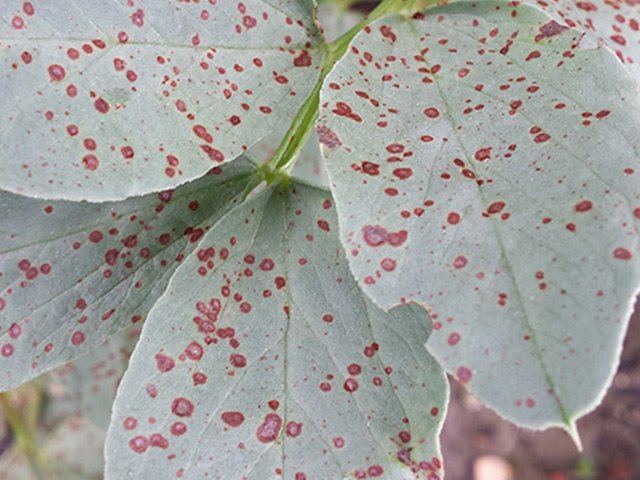
Chocolate Spot |
The approval is timely for rust control in spring beans awaiting second fungicide applications. Cool wet conditions also increase the risk of chocolate spot.
Existing stocks of Elatus Era on farms and in distribution stores, for cereal treatments, can also now be used on field bean and combining pea crops.
Results of PGRO research and Syngenta trials have shown Elatus Era, containing the new active Solatenol and prothiaconazole, provided excellent control of both key diseases in field beans.
The approval permits one application per season at a rate of 0.66 l/ha in field beans and combining peas. Treatment is permitted up to 20% of pods having reached typical length (Growth Stage 72).
Insect pests
Pea moth
Pea moth activity has been sporadic during the 2021 season, some areas reaching threshold at the beginning of June and some in mid-June. The PGRO spray date prediction model is generally predicting a period of about 13-15 days between threshold and spray date.
The spray date is generated using met data and predicts when eggs will hatch and larvae are crawling across the plant, the larvae being the target of insecticide sprays.
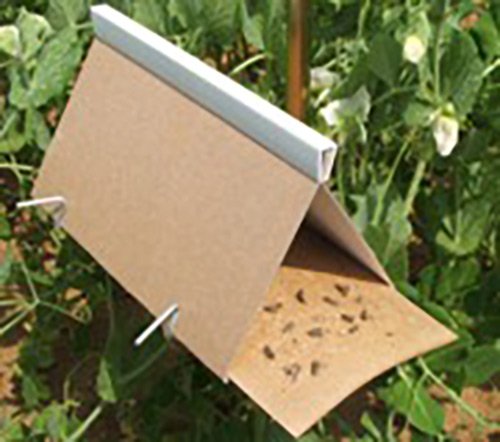
Pea moths on a sticky trap |
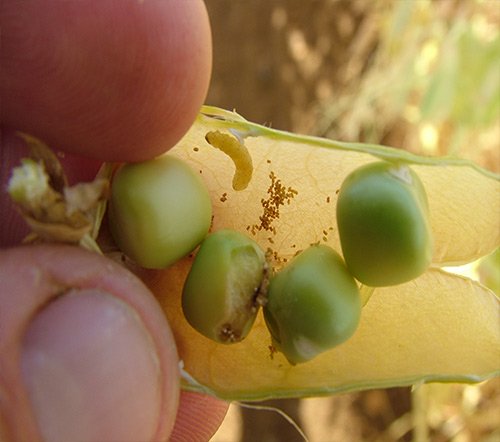
Pea moth Larvae |
Combining peas
The threshold, which determines whether treatment is necessary, is 10 or more moths caught in a trap on two consecutive occasions.
A spray date can be obtained from the PGRO website - https://www.pgro.org/pea-moth/ based on a computer prediction, 3 - 4 days after reaching a threshold.
On the predicted spray date, crops which are at the first pod set stage, or which have flowered should be sprayed, but later crops should only be sprayed when they reach first pod set. Crops with flat pods are susceptible to damage. A second application should be applied 10-14 days later.
A checklist for insecticides can be found here https://www.pgro.org/pests-and-diseases/
Vining peas
Where the acceptable level of damage is much lower in vining peas, the threshold used for combining peas is not suitable and therefore the traps should only be used as a guide as to the presence of moths. In areas where damage has been a problem in the past, crops which are at the first pod set stage should be treated with a single application. Take care to observe the minimum interval between application and harvest.
For products available to control pea moth please see our technical updates TU14 (checklist of fungicides and insecticides for vining peas) and TU15 (checklist of fungicides and insecticides for combining peas) at www.pgro.org.
Technical Updates can be found here https://www.pgro.org/vining-peas-vegetable-legumes/
Aphids
Aphid activity in pea and bean crops is being reported at reasonably low levels, although pea aphids and black bean aphids have been recorded by the Rothamsted Insect Survey. Further information can be found at https://insectsurvey.com/
PGRO technical information
All PGRO Agronomy information has been revised to include the changes in pesticide availability for peas and beans. PGRO publications are available as free downloads from the PGRO web site www.pgro.org User passwords are available on request through the web site.
The information in this publication must not be reproduced without the express written permission from the PGRO.
Information disseminated by the Processors & Growers Research Organisation is given after the exercise of all possible care in compilation, preparation and issue, but is provided without liability in its application or use.



